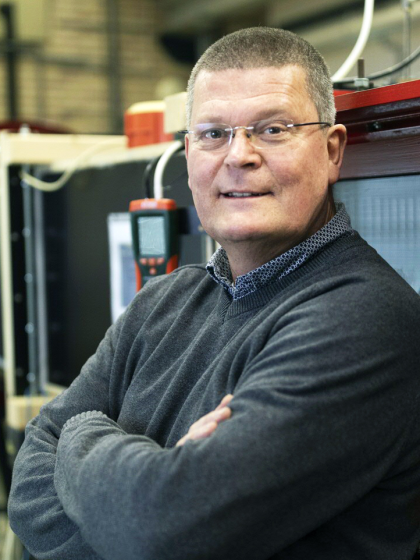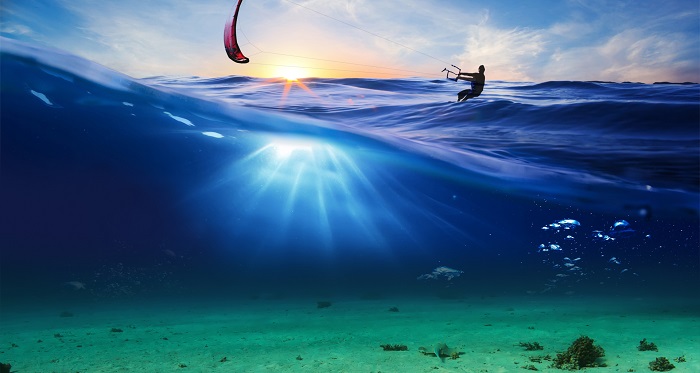Generating power from waves

Text by Neeltje Miedema, Research & Valorisation
‘The technological breakthrough enables the generation of clean electricity from low velocity water streams with an efficiency rate that has not been seen before,‘ says Dr. Eize Stamhuis. Stamhuis, Experimental Marine Zoology, University of Groningen (UG), develops in close collabo-ration with industry a completely new approach based on the principle of kiting for harvesting energy out of low velocity water streams. The method offers significant advantages over existing technologies, including wind and solar power.
Stamhuis: ‘First, t hose kiting method makes it possible to generate electricity in an environmentally sound manner at low velocity water stream locations where this was previously not possible, such as those commonly found along the Dutch coastline . Secondly, m aking use of k ite power technology is a cost-effective renewable energy solution with a low environmental footprint. The installation is completely beneath the water surface and virtually no large foundations need to be placed on the sea floor. Finally, t idal power has the great advantage over solar and wind power that it is available around the clock, and that the amount of energy generated can be predicted to the minute and with a great degree of accuracy from now to eternity. Energy from tidal streams is available and will be as long as the moon will circle around the earth. ’
Aerodynamics design

SeaCurrent, a company based in Grou, Frysia, has been working for several years on a promising kiting design for harvesting energy out of low velocity water streams . The design is based on experimental fluid mechanics and biomimetics . Biomimetics or bionics is the application of biological methods and systems found in nature to the study and design of engineering systems and modern technology. Stamhuis: ‘At the moment with the whole team we look at different aspects on the whole production cycle; ranging from science to production. I clearly focus on the science.’
New ideas spring from experimental research. Stamhuis: ‘I like to take new ideas further and see if they are feasible to be applied and used as new sources of energy. Other examples of experimental fluid mechanics based research are the o ptimization and more efficient propulsion for ships based on a whale tail and using benefits of formation flying of transatlantic aircraft, based on research into the formation flying of birds.’
The kiting technology has been scientifically tested by Stamhuis and his research group at the Energy and Sustainability Research Institute Groningen (ESRIG), UG, using computational models. In addition, certain parts have been tested and optimized in the UG’s flow tank and lab. T he renowned Maritime Research Institute Netherlands (MARIN) in Wageningen, will be performing this summer the final kite prototype model test using scale models. Stamhuis is looking forward to testing the models.
Stamhuis: ‘ It is especially exciting to see how the kiting technology keeps control while gliding in the slow-moving currents to reap energy underwater. The kites are still 12 meters wide and about 10 meters high; they must go back and forth and back again, controlled by the tide. The energy generated will be transmitted to the electricity grid on land via power cables.’
This innovative kiting project has been funded under the Fryslân Fernijt (Friesland Vernieuwt) innovation programme, summer 2015. Meanwhile the concept and the 'proof of principle' of the kiting design are patent pending. The project has a great future, says Stamhuis.
A future ahead
Stamhuis: ‘ Across the world, there are various methods in use to generate power from running water, but all of them are only really effective at relatively high flow speeds (faster than about 2.5 m/s). However, the number of locations that fall into the ‘high flow-speed’ class is actually rather limited, both in the Netherlands and globally. As there are many more of these low velocity water streams areas worldwide to harvest this kinetic energy. Therefore, the project definitely has a wide scale potential impact.’

More news
-
15 September 2025
Successful visit to the UG by Rector of Institut Teknologi Bandung
